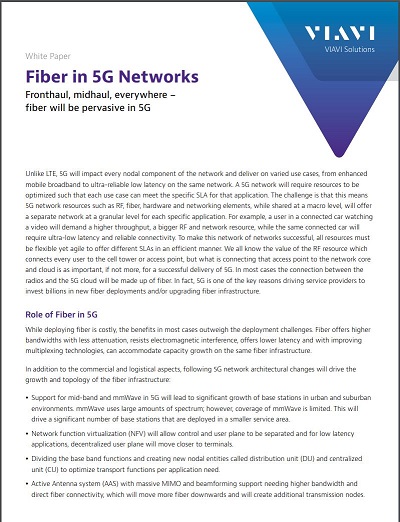VIAVI Solutions
VIAVI Solutions 

Fiber in 5G Networks
Fronthaul, midhaul, everywhere - fiber will be pervasive in 5G
Unlike LTE, 5G will impact every nodal component of the network and deliver on varied use cases, from enhanced mobile broadband to ultra-reliable low latency on the same network. A 5G network will require resources to be optimized such that each use case can meet the specific SLA for that application. The challenge is that this means 5G network resources such as RF, fiber, hardware and networking elements, while shared at a macro level, will offer a separate network at a granular level for each specific application. For example, a user in a connected car watching a video will demand a higher throughput, a bigger RF and network resource, while the same connected car will require ultra-low latency and reliable connectivity. To make this network of networks successful, all resources must be flexible yet agile to offer different SLAs in an efficient manner.
This paper discusses how fiber is implemented in 5G networks, including use cases. The paper reviews connections between the access point to the network core and cloud. The paper makes the case that these fiber-powered connections and their flexibility are as important, if not more, for a successful delivery of 5G than the RF connections between users and cell towers/access points.

By submitting this form, you are also granting VIAVI Solutions permission to send you emails about related topics in accordance with our Privacy Policy. You can opt-out at any time by clicking the unsubscribe link in our emails.